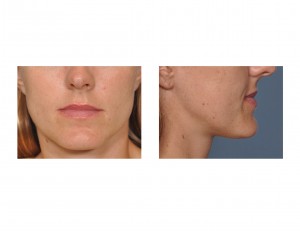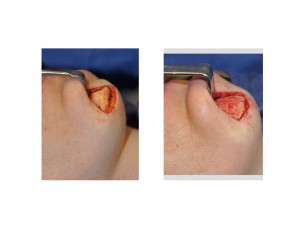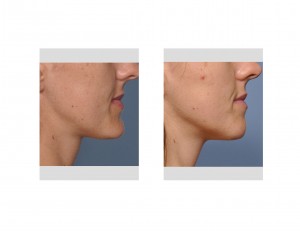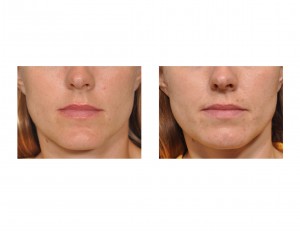Background:The chin is the dominant feature of the lower third of the face. When in good balance with the rest of the face it is an asset and a pleasing feature. When it is short or weak, it makes the face profile too convex and suggests a weak nature to the person. When it is too prominent, the facial profile becomes concave and makes the midface look retruded. Eitherway the chin plays a major role in facial appearance
Macrogenia, or overgrowth of the chin, creates a lower face that is out of balance with the upper and middle facial thirds. Most cases of macrogenia are a combination of excessive horizontal and vertical bone development. While macrogenia can be a reflection of an overall lower jaw overgrowth as evidenced by a Class III malocclusion, most larger chins occur in isolation. In women, the position of the chin should be slightly convex in profile and not too vertically long. Too much chin projection creates too strong of a lower face and a more masculine look.
Correction of a large chin is more complex and difficult than correction of an underdeveloped or small chin. While the bone reduction is fairly straightforward, whether by osteotomy or burring reduction, management of the excess soft tissues is another matter.In small chin reductions, the soft tissue will shrink and adapt to the new bone shape. But in large chin reductions, the soft tissues will not shrink enough and will sag if not removed or tightened. This can create the classic ‘witch’s chin deformity’.




Case Highlights:
1) A large and prominent chin consist of both excess bone and soft tissue. Both must be managed for a successful chin reduction procedure.
2) Most chin reductions are best done from a submental approach where the bone can be reduced in all dimensions and the soft tissues tightened.
3) Chin reduction surgery involves a temporary period of swelling and several months to see the final result.
Dr. Barry Eppley
Indianapolis, Indiana


